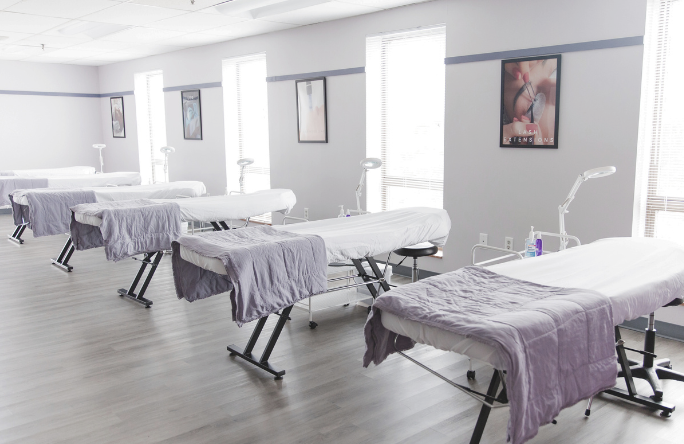
Chemical peels are a popular treatment in esthetics, but as an esthetician, it's essential to be well-informed when performing them. Here are some professional tips for applying chemical peels:
1. Understand Skin Types and Conditions
- Skin Type Assessment: Determine if the client has sensitive, oily, dry, or combination skin. Different peels work best for certain types. For example, glycolic acid is more suitable for oily or acne-prone skin, while lactic acid is a great option for dry skin types.
- Fitzpatrick Scale: Use the Fitzpatrick scale to assess how a client’s skin may react to sun exposure and peels. For darker skin tones, opt for gentler peels to avoid post-inflammatory hyperpigmentation (PIH).
2. Consult Thoroughly Beforehand
- Pre-Treatment Consultation: Discuss the client's medical history, current skincare routine, and any medications they may be using (e.g., retinoids, which can increase sensitivity).
- Contraindications: Look for contraindications such as pregnancy, recent waxing, open wounds, or active infections like cold sores. These could exacerbate irritation.
3. Prepping the Skin
- Skin Priming: Some clients may need to "prep" their skin using retinoids or lightening agents in the weeks leading up to the peel to enhance results and reduce risks.
- Clean and Degrease: Properly cleanse the skin to remove makeup and oil, allowing the peel to penetrate evenly.
4. Choose the Right Peel for the Client
- Acid Type: Match the type of peel (glycolic, lactic, salicylic, TCA) to the skin condition you are targeting, such as hyperpigmentation, acne, or fine lines.
- Peel Strength: Start with lower percentages, especially for new clients, to minimize risk. You can always increase strength in subsequent treatments.
5. Application Technique
- Uniform Application: Apply the peel evenly to avoid patchiness. Some areas may absorb more quickly, so monitor closely.
- Avoid Sensitive Areas: Be cautious around the eyes, nostrils, and mouth. Use a barrier cream to protect these areas if necessary.
6. Monitor Client's Reaction
- Watch for Signs of Irritation: Pay attention to the client’s skin reaction during the treatment. Prolonged redness, excessive tingling, or frosting in unintended areas may indicate the peel is too strong or being left on too long.
- Neutralization: For peels that need neutralizing, ensure even application of the neutralizer to stop the peeling process and calm the skin.
7. Post-Treatment Care
- Post-Peel Skincare: Advise clients on proper aftercare, including avoiding sun exposure, using SPF 30+ daily, and hydrating the skin with gentle moisturizers. Recommend calming ingredients like aloe vera or peptides.
- Avoid Irritants: Encourage clients to avoid retinoids, exfoliants, or other harsh skincare products for at least a week after the peel.
- Healing Time: Inform the client that peeling, redness, and flaking may occur and to avoid picking at the skin to prevent scarring or infection.
8. Plan a Series for Best Results
- Treatment Schedule: For optimal results, plan a series of peels spaced 4-6 weeks apart. Regular maintenance can help clients achieve smoother, clearer skin over time.
- Adjust Treatments: Based on how the skin responds, adjust the strength or type of peel during the next sessions.
9. Follow Up
- Post-Treatment Check-In: It’s good practice to check in with clients a few days after the peel to ensure there’s no excessive irritation or complications.
10. Stay Educated
- Continual Learning: Keep up with the latest peel techniques and formulations through courses and certifications. New acids and combination peels are constantly emerging in the skincare industry.
By following these tips, you’ll help ensure client safety, efficacy of the treatment, and satisfaction with the results.

















